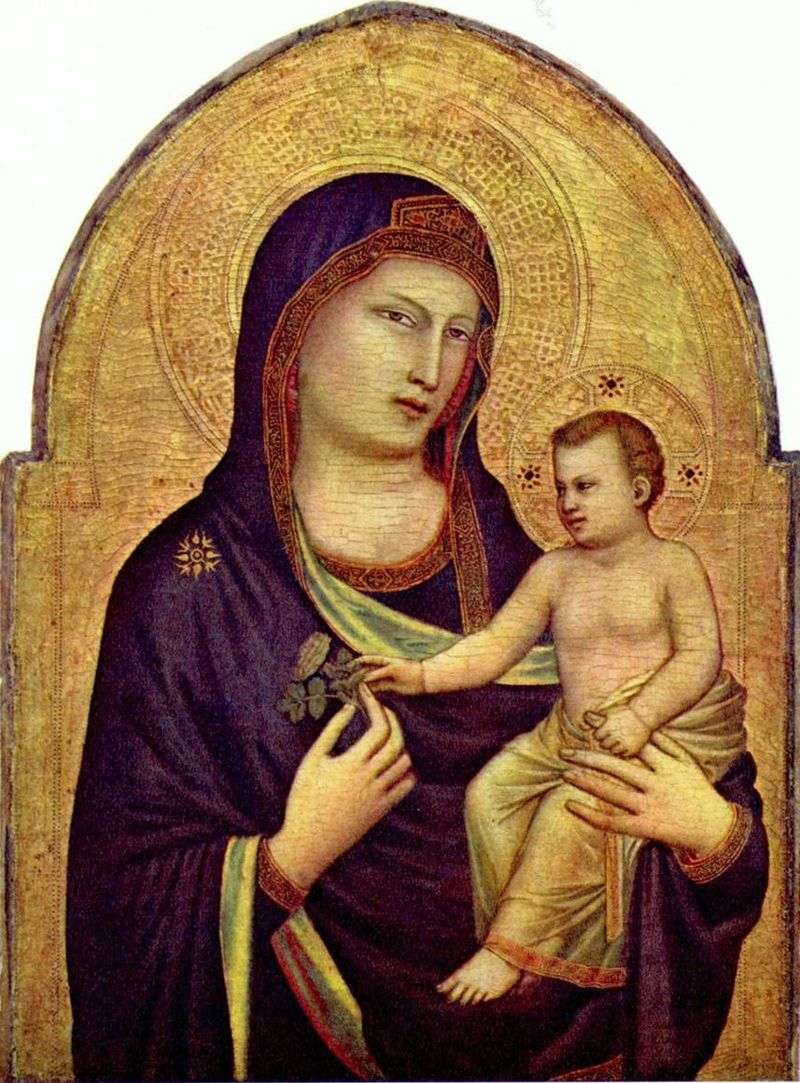
The name of Giotto is associated with the beginning of a new stage in the development of Italian art, marked by a break with the medieval tradition of Italo-Byzantine art. Giotto studied at Cimabue, he worked in Florence, Rome, Padua, Naples and other Italian cities.
Important for his creative formation was familiarity with the works of the greatest Tuscan sculptors Niccolo and Giovanni Pisano and Arnolfo di Cambio. Giotto reformed Italian painting, affirming in it new pictorial principles and ethical ideals, which were developed by the masters of the Renaissance. He used the techniques of angular angles known in his time and the ancient perspective without a single point of convergence, but he gave the organization of space in his works a wholeness and clarity of structure unusual for the epoch of those times, developed a new principle of “cut-and-shine modeling” based on the gradual lightening of the basic dense and rich colorful tone, that allowed to keep the purity of color and its brightness. “Madonna and Child” refers to the mature works of the master.
Here it is obvious the use of new principles in art developed by the master. Other famous works: paintings of the chapel of degli Scrovegni. OK. 1305-1308. Padua; paintings of the Bardi and Peruzzi chapels. OK. 1320-1325. Church of the Site of Crones, Florence; “Madonna on the throne,” Ok. 1310. The Uffizi Gallery, Florence.
